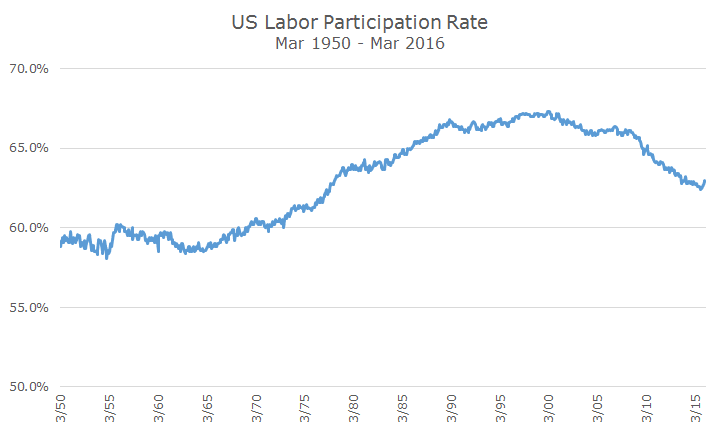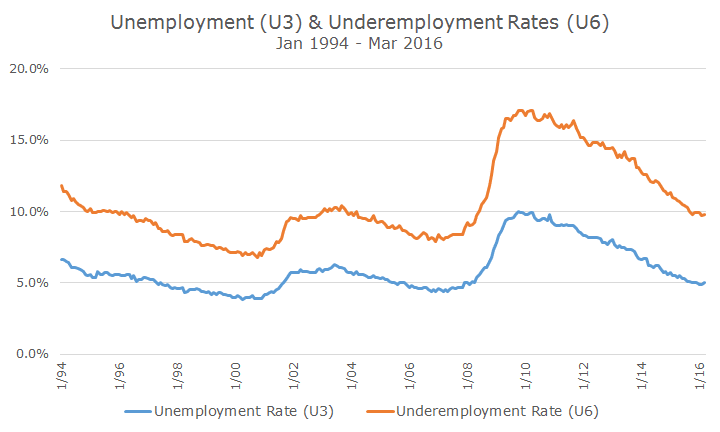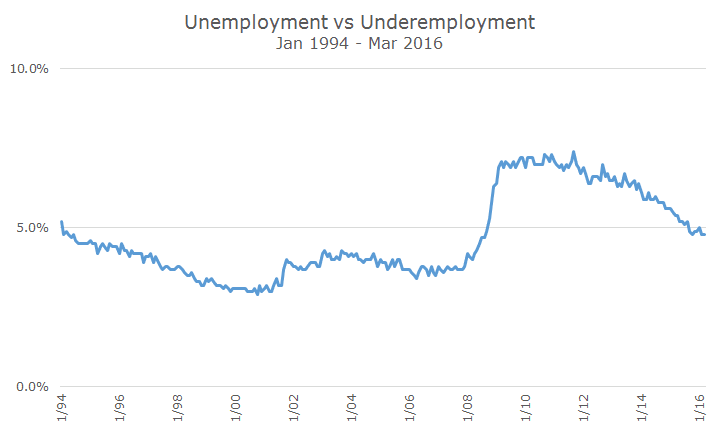The Bureau of Labor Statistics (BLS) reported that total non-farm payrolls rose by 215,000 in March, lower than February’s upwardly revised 245,000 figure, but ahead of the consensus estimate of 205,000. January was also revised downward to 168,000 from 172,000.
The unemployment rate ticked up from 4.9 percent to 5.0 percent reflecting a large increase in the labor participation rate which increased six-tenths of a percent in the last six months – the largest six month rise since the 1990s.
The labor participation rate is the number of people who are either employed or actively looking for work as a share of the working age population. The labor participation rate has fallen steadily since the 2008 financial crisis as workers were forced out of the labor market entirely.
The following chart shows two different measures of unemployment provided by the BLS to help understand the labor situation. The unemployment rate, or U3 in blue, is the most commonly cited unemployment rate and includes those who are without jobs that have looked for work in the last four weeks.
The U6 data, which starts in 1994, also includes the underemployed: those that are discouraged who would like to work buy have stopped looking, the ‘marginally attached’ workers who would like to work but haven’t in the last four weeks and the part time workers who would like to work full time, but can’t find full-time jobs.
The last chart simply subtracts the U6 underemployment rate by the U3 unemployment rate to show what the spread has been since the data was first released back in 1994. You can see that there have always been underemployed workers, but that the 2008 financial crisis was a shocking increase that is just now beginning to get back to ‘normal.’
Overall, this unemployment report was constructive, even though the headline rate rose one-tenth of a percent. All things considered, it’s much better to have the unemployment rate rise because more workers are re-entering the workforce (the denominator) than more people out of work (the numerator).
That’s said, there is still a lot of room for improvement among the underemployed and those that are still out of the labor market. It would be nice if the participation rate would increase back to the levels before the 2008 financial crisis, although that may not be entirely possible as baby boomers leave the workforce.




